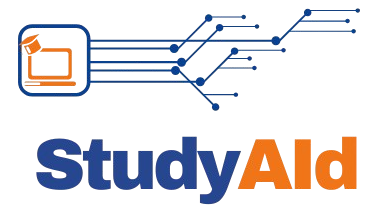Currently Empty: $0.00
Introduction
As educators, maintaining academic integrity is paramount. With the rise of artificial intelligence (AI) in education, new challenges and opportunities have emerged in the fight against cheating. By integrating AI responsibly and using structured frameworks like the AI Assessment Scale (AIAS), we can create robust systems that uphold academic honesty. This blog explores how to prevent cheating through the strategic use of AI and provides a detailed guide on implementing the AIAS scale to ensure fair and ethical educational practices.
The Role of AI in Preventing Cheating
AI offers powerful tools to enhance learning and streamline administrative tasks, but it also introduces potential risks for academic dishonesty. By understanding these risks and employing AI proactively, educators can prevent cheating and promote a culture of integrity. Here’s how AI can be leveraged to uphold academic honesty:
- Automated Plagiarism Detection: AI tools can detect similarities between student submissions and existing content, helping to identify potential plagiarism.
- Proctoring Tools: AI-driven proctoring software can monitor students during online exams, identifying suspicious behaviors and ensuring compliance with exam rules.
- Data Analytics: AI can analyze student performance data to detect anomalies and patterns that may indicate cheating.
- Personalized Assessments: AI can generate unique assessments for each student, making it difficult for them to share answers.
Implementing the AI Assessment Scale (AIAS) to Prevent Cheating
The AI Assessment Scale (AIAS) provides a structured framework for incorporating AI into educational assessments while maintaining academic integrity. By defining clear levels of AI usage, educators can balance the benefits of AI with the need to prevent cheating. Here’s how to implement the AIAS effectively:
AIAS Levels and Guidelines
- Level 0: No AI Usage
- Objective: Develop critical thinking and foundational knowledge without any AI assistance.
- Guidelines: Students must complete assessments entirely on their own. No AI tools are permitted.
- Declaration Statement: “During the preparation of this assignment, I did not utilize any AI tools. I hereby assume complete responsibility for the content presented in this publication.”
- Level 1: AI-Assisted Information Recall and Retention
- Objective: Use AI to enhance memory and retention of information.
- Guidelines: AI tools like flashcards or quizzes can be used for studying, but not for completing assignments.
- Declaration Statement: “I utilized AI tools for studying and recalling information, but not for completing this assignment.”
- Level 2: AI-Assisted Idea Generation and Structuring
- Objective: Leverage AI for brainstorming and organizing ideas.
- Guidelines: AI can be used for generating ideas and outlines, but the final submission must be free of AI-generated content.
- Declaration Statement: “I used AI tools to brainstorm and structure ideas, ensuring that no AI-generated content is included in the final submission.”
- Level 3: AI-Assisted Editing
- Objective: Use AI to improve the clarity and quality of student-created work.
- Guidelines: AI tools can help refine content, but no new content can be generated by AI. Original work must be provided in an appendix.
- Declaration Statement: “I used AI tools to refine and improve my work. The original content is included in the appendix.”
- Level 4: AI Task Completion with Human Evaluation
- Objective: AI completes specific tasks, with students providing discussion or commentary.
- Guidelines: AI-generated content must be cited, and students should critically evaluate the AI’s contributions.
- Declaration Statement: “I used AI to complete specific tasks and provided critical evaluation. All AI-generated content is properly cited.”
- Level 5: Full AI Assistance
- Objective: Integrate AI throughout the assessment process.
- Guidelines: AI can support the entire process, but students must ensure the final work reflects their understanding and effort.
- Declaration Statement: “I fully utilized AI to support my work. The final submission reflects a thorough review and personal understanding.”
- Level 6: Full AI Collaboration
- Objective: Collaborate extensively with AI, integrating it as a co-creator.
- Guidelines: Students and AI work together to create content, with clear delineation of AI’s role.
- Declaration Statement: “I collaborated with AI in creating this work. The final product is a synthesis of AI capabilities and my creative input.”
Implementing AIAS in Your Classroom
Step 1: Educate Students and Faculty
- Clearly communicate the levels of AI usage and the importance of maintaining academic integrity.
- Provide training sessions on how to use AI tools responsibly and ethically.
Step 2: Incorporate AIAS into the Syllabus
- Include a detailed section in the syllabus explaining the AIAS levels and the guidelines for each.
- Outline the consequences of violating these guidelines to emphasize the seriousness of academic dishonesty.
Step 3: Use AI to Monitor and Evaluate Submissions
- Implement AI tools for plagiarism detection and performance analysis.
- Use AI proctoring software during online exams to ensure compliance with exam rules.
Step 4: Require AI Declarations
- Mandate that students include an AI Declaration Statement with every assignment.
- Regularly review these declarations to ensure adherence to AIAS guidelines.
Step 5: Foster a Culture of Integrity
- Encourage open discussions about the ethical use of AI and the importance of academic honesty.
- Recognize and reward students who demonstrate integrity in their work.
Conclusion
Preventing cheating in education requires a multifaceted approach that leverages technology responsibly. By integrating AI and implementing the AI Assessment Scale (AIAS), educators can create a robust framework that promotes academic integrity and ensures fair assessments. Educating students about responsible AI usage and requiring AI declarations are crucial steps in this process. Together, we can harness the power of AI to enhance learning while upholding the values of honesty and integrity in education.
About StudyAID Catalog
At StudyAID, we are committed to revolutionizing education through innovative AI integration. Our extensive catalog of AI-integrated assignments and tools empowers educators and students, enhancing the learning experience while maintaining academic integrity. Visit StudyAID Catalog to explore our resources and discover how AI can transform your educational journey.
By following these guidelines, educators can create an environment that discourages cheating and promotes ethical use of AI, ensuring that students are well-prepared for the challenges and opportunities of the future.






